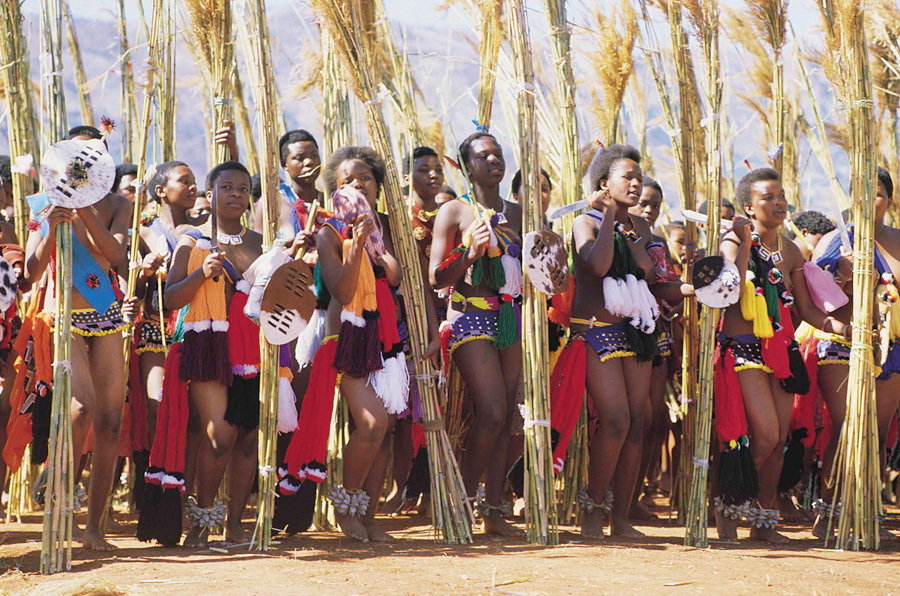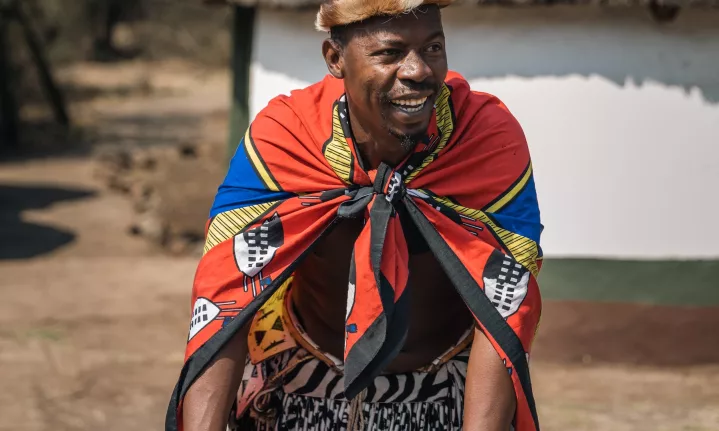Facts About South African Culture Today Uncovered
Table of ContentsMore About South African Culture TodayThe South African Culture Today IdeasNot known Facts About South African Culture TodaySouth African Culture Today - An Overview4 Simple Techniques For South African Culture TodaySouth African Culture Today - An Overview
An issue of value in Zambian towns is the passing away of liked ones. All members of the village put money, time and initiative together for the interment of the deceased.Throughout the mourning duration; males stay outside the residence and the women remain inside your house of the deceased. After chatting about the departed, the town strolls to the location of burial to say their last bye-byes. Songs and dance is a really essential facet of the Zambian society. The various tribal devices have their very own dance kinds; nevertheless, makishi prevails amongst all tribes.
The Basic Principles Of South African Culture Today
When it involves songs, drums are made use of one of the most, with a range of drumming ceremonies. In Zambia, majority of individuals are Christian; Protestant and Roman Catholic. There are small groups of Muslims and Hindus, with the rest following regional native tribal beliefs.

South African heritage and society is profoundly diverse, and contains several teams of individuals who each have their very own traditions and beliefs. Having such a diversity of individuals and societies is what makes South Africa so distinct. In the true feeling of the expression, we are a rainbow country.
Making it the 7th on the list of countries with the most Portuguese individuals in it outside of Portugal. Portuguese is not only a culture, yet it is likewise a language and a citizenship. Portuguese people originate from the nation of Portugal in Europe, nevertheless, due to Portugal (like lots of various other countries in Europe) checking out the world and overcoming other nations during the 15th 20th centuries, South Africa has what we call Portuguese South African's living in it.
The Only Guide to South African Culture Today
Amongst the noticeable attributes of the topography is a plateau that covers practically two thirds of the center of the nation. The plateau complex climbs toward the southeast, where it climaxes in the Drakensberg array, part of an escarpment that separates the plateau from the seaside locations. The Drakensburg consists of Champagne Castle, the highest possible optimal in the country.
The area north of the Witwatersrand, called the bushveld, inclines downward from east to west toward the Limpopo River, which creates the worldwide border. The western section of the plateau, the middleveld, likewise comes down towards the west and differs in altitude between the highveld and bushveld. In between the Drakensburg and the eastern and southerly shoreline, the land descends to the sea.
Nearer the coastline there is a low-lying plain called the eastern lowveld. Southwest of the plateau the country ends up being considerably extra arid, paving the way to the stony desert of the Great Karroo, approached the eastern by the reduced, better watered plateau of the Little Karroo. Dividing the dry southerly inside from the sandy coastal of the southern coast and West Cape is one more array, the Langeberg.
Excitement About South African Culture Today
The country's racially, ethnically, and politically separated history has actually generated national and subnational icons that still operate as symbols of the country, and others symbols that are approved just by particular groups. The monoliths to white settler occupation and political supremacy, such as the Afrikaner Voortrekker ("leader") Monument in Pretoria and the Rhodes Monument recognizing the British colonial empire home builder and Cape head of state Cecil Rhodes, remain sectarian signs.
The first contemporary citizens were the San ("bushman") hunter-gatherers and the Khoi ("Hottentot") individuals, that rounded up animals (South African culture today). The San may have existed for hundreds of years and left proof of their visibility in hundreds of old cavern paints ("rock art"). Bantu-speaking Going Here clans that were the ancestors of the Nguni (today's amaZulu, amaXhosa, amaSwazi, and vaTsonga peoples) and Tswana-Sotho language groups (today's Batswana and Southern and Northern Basotho) migrated down from eastern Africa as very early as the fifteenth century

The 2 previous republics of the Orange Free State and Transvaal (South African Republic) were developed by Afrikaner settlers who defeated and dispossessed the Basotho and Batswana. Lesotho would certainly have been forcibly included right into the Orange Free State without the extension of British protection in 1869. The best unification of the country arised from the South African War (18991902) between the British and the 2 Afrikaner republics, which minimized the nation to mess up at the start of the twentieth century.
Afrikaners historically considered themselves the only true South Africans and, while providing complete citizenship to all homeowners of European descent, denied that condition to individuals of shade till the autonomous shift of 1994. British South Africans retain a feeling of cultural and social connection to Great Britain without weakening their identity as South Africans.
Not known Incorrect Statements About South African Culture Today
The diversity and fragmentation within ethnic groups and the balance of stress in between those groups throughout the twentieth century protected against interethnic civil conflict. While intergroup tensions over sources, entitlements, and political prominence stay, those conflicts are as likely to match Zulu versus Zulu as Zulu versus Xhosa or African versus Afrikaner.
From colonial India, British sellers and managers brought the curved metal decorative roofing systems and slim shoelace work pillars that still epitomize the outdoor patios of cottages in the areas and Continue cities throughout the nation. Holy places contribute an important building element also in the smallest towns. Along with the soaring steeples and classic stonework of Afrikaans Dutch Reformed churches, Anglican churches, synagogues, mosques, and Hindu shrines provide range to the religious building scene.

Slaughtering and the developing of traditional cereal beer are crucial in securing the involvement and a good reputation of the ancestors who are thought about the guardians of good ton of money, success, and health. Indian neighborhoods keep their native cooking practices and use them on Islamic and Hindu ritual and ritualistic events. Afrikaners and Coloured people gather at weekend breaks and unique celebrations at multifamily barbecues called braais, where community bonds are strengthened.
Because this was the key financial enterprise of both black Africans and white homesteaders, conflict between those teams focused on the ownership of grazing land and livestock. In 1867, the largest ruby down payments worldwide were uncovered at Kimberley in the west main location. The wealth from those fields look at this site assisted fund the exploitation of the best gold coral reef worldwide, which was discovered on the Witwatersrand in 1886.
Some Known Details About South African Culture Today
This led to misconceptions and calculated misstatement in the negotiations of white inhabitants and government officials with African principals throughout the colonial period (South African culture today). In the facility of African books, some aspects of common and mainly "tribal trust fund" land tenure were preserved, and even in white backwoods, types of public period were still exercised in areas with African neighborhoods
After the autonomous makeover of 1994, programs for land restitution, redistribution, and reform were set up, yet development has been slow. The white minority still regulates eighty percent of the land. In the wake of farming land invasions in Zimbabwe, the Division of Land Affairs has actually promised to speed up land redistribution.